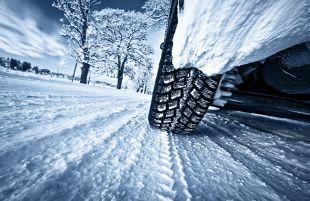
Winter car. What to remember?
 Trouble starting a cold engine in the morning, scratching on frozen windows, and shaking off snow-covered boots before getting in your car are some of the main signs that winter is here for good. Here are some of the most common winter problems that are primarily faced by drivers who park their cars outdoors during the winter season.
Trouble starting a cold engine in the morning, scratching on frozen windows, and shaking off snow-covered boots before getting in your car are some of the main signs that winter is here for good. Here are some of the most common winter problems that are primarily faced by drivers who park their cars outdoors during the winter season.
 1. Don't move without a working battery
1. Don't move without a working battery
If the battery is not fully charged, chances are it will move around with the wires. The battery has a 25% capacity at a temperature of +100 degrees, but when the temperature drops to 0, it loses up to 20% of efficiency. This is due to the fact that the electrolyte loses its ability to store energy at low temperatures. Low temperatures cause engine oil to thicken, which means more power is needed to start the engine.
Recall: Check the battery level with an electronic or load meter. Correct values: 12,5-12,7 V (quiescent voltage at the terminals of a healthy battery), 13,9-14,4 V (charging voltage). In case of lower values, charge the battery with a charger.
2. Freezer doors, freezer locks
After night frosts, freezing doors and freezing locks are the scourge of drivers who leave the car “under the cloud”. It is worth having an aerosol defroster for locks and preserving seals with a silicone-based liquid until freezing temperatures set in.
Recall: If possible, always park facing east. Thanks to this, the morning sun will warm the windshield, and we will not spend precious minutes clearing snow or fighting with the door.
3. Winter tires
It is worth equipping a car with winter tires when the average daily temperature drops and remains below +7 degrees Celsius. Winter tires have: more natural rubber, vegetable oil, they have less tendency to slip, retain more flexibility, and the tread pattern provides better grip on ice, snow and slush.
Recall: Never wait until the first snow falls before changing tires.
4. Wipers
Mud and snow almost constantly pollute the windshield. Importantly, atmospheric precipitation on the road often blows the wheels of the car in front directly onto the windshield. Efficient wiper blades become indispensable.
Recall: Worn out wipers will only smear the dirt and remove the dirt inaccurately. So if they don't pick up dirt on the glass accurately, let's replace them to provide better visibility during heavy snowfall.
5. Liquid, which is an indispensable assistant in cleansing.
Drivers who forget to change to winter fluid are often forced to unlock the washer system. It also happens that the frozen plates increase in volume and irrevocably destroy the hoses and the fluid reservoir. How to avoid this problem? It is enough to replace the liquid with a winter one before the temperature drops to 0.
Recall: Warm liquid freezes already at 0 degrees Celsius. Alcohol-based winter fluid freezes at temperatures well below freezing.
6. Time is money
Drivers often forget about this. Traveling by car in winter has its pros and cons. The latter are usually associated with additional minutes needed for: starting the car in the morning, clearing snow, or definitely slower driving through the “glass” on the road.
Recall: Sometimes leaving the house 15 minutes early can save you the stress and rush that can end in an accident.
7. When will some accessories run out?
A defroster for windows and locks, an ice scraper, a snow shovel - these accessories will come in handy for motorists who park their car “under the cloud”. In the mountains, snow chains will prove to be an indispensable element, which will provide traction on snow-covered cars.
Recall: On some roads it is necessary to use vehicles with snow chains.